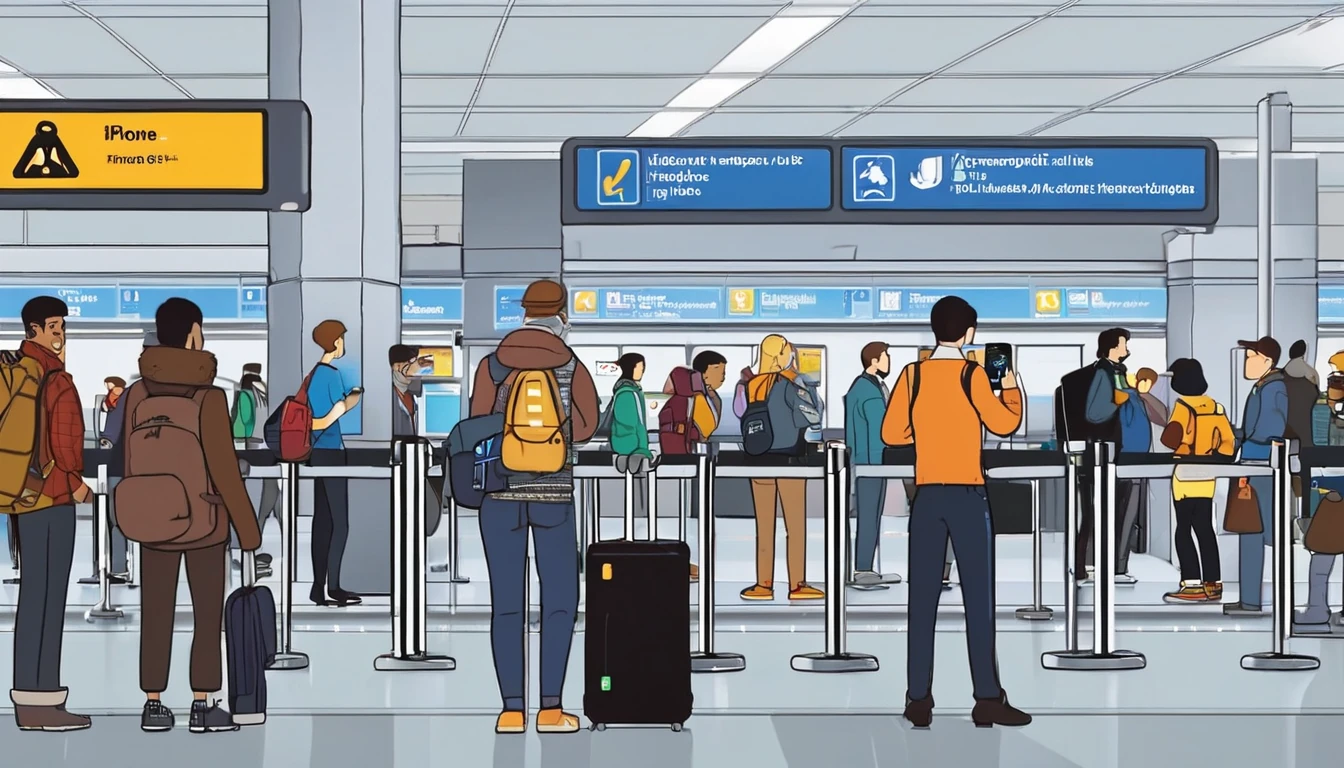Simology’s Q4 update brings wider, faster 5G to the places travellers actually go. This simology 5g coverage expansion focuses on key tourist cities across North America and Western Europe, boosting peak and average speeds, improving indoor reach, and smoothing handoffs between busy cells. Whether you’re streaming maps, uploading reels, or tethering a laptop, you should feel the difference in airports, old towns, stadiums, and along major transit corridors. Expected real‑world speeds typically range from 100–600 Mbps on mid‑band (n77/n78) with bursts above 1 Gbps in favourable spots. As always, results depend on device support, local spectrum, and network congestion.
Below you’ll find the city lists now covered on our 5G partner footprints, what speeds to expect, device band notes (so you can check compatibility before you buy), and quick steps to get set up. We’ve added practical checklists and pro tips, plus links to our eSIMs by region so you can pick the right plan. If you care about the numbers, we regularly publish real‑world results in our Speed Tests category and will keep updating as new cells light up.
Where 5G just got faster: key tourist cities (Q4 2025)
We’ve expanded 5G access on our partner networks across high‑traffic destinations. Coverage and speed are strongest in dense urban cores and around landmarks, with improving indoor penetration on mid‑band.
United States highlights
Good news if you’re heading to the US—expect stronger mid‑band and more consistent 5G in:
- New York City (Manhattan, Brooklyn waterfronts, Midtown transit hubs)
- Boston, Washington DC, Philadelphia
- Miami, Orlando, Tampa
- Chicago, Detroit, Minneapolis
- Las Vegas, Phoenix, Denver
- Los Angeles, San Diego, San Francisco Bay Area
- Seattle, Portland
- Honolulu tourist corridors
Typical experience: - Mid‑band 5G (n41/n77): 200–600 Mbps; lower latency vs 4G. - mmWave (n260/n261) pockets in dense zones: 1–3 Gbps bursts at short range. - Sub‑6 indoor coverage improving in malls, convention centres and airports.
Planning US travel? Compare regional options via Esim United States or bundle routes with Esim North America.
France highlights
Urban 3.5 GHz coverage (n78) continues to mature across:
- Paris (central arrondissements, business districts, key RER/Metro interchanges)
- Nice, Cannes, Marseille
- Lyon, Toulouse, Bordeaux
- Lille, Strasbourg, Nantes
Typical experience: - n78 mid‑band: 150–500 Mbps, often higher outdoors. - n1/n3 anchors assist indoor coverage; expect 5G to hold in large stations and shopping areas.
See plans for city breaks and TGV routes via Esim France.
Italy highlights
Tourist corridors and historic centres see broader 5G overlays in:
- Rome (Termini area, Trastevere edges, Vatican surrounds)
- Milan (Duomo, Navigli, business districts)
- Florence, Venice, Naples, Bologna
- Turin, Verona, Palermo
Typical experience: - n78 mid‑band in city centres: 150–450 Mbps. - n1/n3/n7 support improves handoffs; dense stone architecture can still limit indoor reach—step near windows for best results.
Plan your itinerary with Esim Italy.
Spain highlights
Strong city coverage and coastal hotspots in:
- Barcelona (Eixample, Gothic Quarter edges, Sants)
- Madrid (Sol, Castellana, Atocha, Chamartín)
- Valencia, Seville, Málaga, Bilbao
- Balearic tourist zones see seasonal boosts
Typical experience: - n78 mid‑band: 150–500 Mbps. - Stadiums and transport hubs may throttle at peak; off‑peak is significantly faster.
Compare Spanish coverage with Esim Spain.
Western Europe multi‑country
If your trip spans multiple countries, our regional profile is the simplest way to roam on 5G with one eSIM:
- Common city pairs: Paris–London–Brussels, Milan–Zurich, Barcelona–Nice, Amsterdam–Berlin corridors
- Strongest in major capitals and intercity rail hubs
Typical experience: - n78 mid‑band where available: 150–500 Mbps - Fallback to LTE‑Advanced where 5G is thin; you’ll still see lower latency vs legacy roaming.
Browse itineraries on Esim Western Europe and explore more city guides via Destinations.
Expected speeds and what affects them
- Outdoors on mid‑band (n77/n78): 200–600 Mbps is common in North America and Western Europe urban cores.
- Indoors: 80–250 Mbps depending on building materials and proximity to windows.
- Busy events: 5G may still outperform 4G, but congestion and deprioritisation can mute speeds. Try side streets or step outside large venues.
- mmWave in the US: Great for short, line‑of‑sight bursts near stadiums, squares and certain transit hubs. Expect 1–3 Gbps, but coverage is highly localised and falls back quickly.
Remember: your device’s supported bands and firmware matter as much as the local tower.
Device band notes (check before you fly)
Most recent flagship devices support the right mix of bands, but it’s worth verifying to maximise 5G.
- United States
- Key bands: n5 (850), n41 (2.5), n66 (AWS), n77 (C‑Band), n260/n261 (mmWave)
- iPhone 12 and newer: strong Sub‑6; US models also support mmWave.
- Pixel 6 and newer; Galaxy S21 and newer: good mid‑band; mmWave support varies by model/region.
- France/Italy/Spain/Western Europe
- Key bands: n1 (2100), n3 (1800), n7 (2600), n28 (700), n78 (3.5 GHz)
- iPhone 12 and newer: excellent n78 support.
- Pixel 5 and newer; Galaxy S20 and newer: typically support n78 plus low/mid anchors.
Tips: - Imported phones may lack local bands. Double‑check your exact model number. - Dual‑SIM: set your Simology line as “Primary” for data and enable 5G Auto/5G On. - Keep device software up to date to ensure the latest carrier settings.
How to get 5G on Simology (step‑by‑step)
- Pick your plan - Single‑country or regional: try Esim United States, Esim France, Esim Italy, Esim Spain, or Esim Western Europe. Multi‑country travellers should consider Esim North America or Western Europe for seamless roaming.
- Install your eSIM - Scan the QR code or use activation codes in your order email. Keep Wi‑Fi on during install.
- Set Simology as your data line - On iOS: Settings > Mobile Data > Default Voice Line/Data > choose your Simology eSIM. Turn on 5G Auto/5G On. - On Android: Settings > Network & Internet > SIMs > turn on Mobile data for Simology. Select 5G preferred.
- Check APN if prompted - Most profiles auto‑configure. If needed, follow the APN values in your confirmation email.
- Restart and test - Give your phone 30–60 seconds on reboot to register on 5G. Run a quick speed test near a window or outdoors.
Before‑you‑fly checklist
- Confirm your phone’s 5G band support for your destination.
- Update iOS/Android and carrier settings.
- Turn off Low Data Mode/Data Saver for best performance.
- Enable VoLTE/Wi‑Fi Calling for reliable voice (when available).
- Download offline maps just in case indoor coverage is patchy.
- Bring a small power bank; 5G can use more battery in weak‑signal zones.
Pro tips to maximise speed and stability
- Move 5–10 metres: stepping outside or towards a window can double your throughput.
- Avoid crowd hotspots during events; a nearby side street may give better quality.
- Toggle Airplane Mode for 5–10 seconds if you lose 5G after leaving the metro or a tunnel.
- Prefer mid‑band: if your phone shows “5G” but feels slow, you may be on a low‑band 5G NR carrier layer. A quick cell reselection (Airplane Mode toggle) can lock you onto faster mid‑band.
- Tethering: use the 5 GHz hotspot band for cleaner spectrum, especially in apartment blocks and hotels.
- Numbers nerd? Check our Speed Tests category for live results and city‑by‑city notes.
For teams and partners
- Business travel managers: consolidate connectivity across regions with pooled data and central billing via For Business. We can pre‑stage eSIMs for conferences and seasonal deployments.
- Travel partners and resellers: integrate our regional plans and city‑level coverage updates through the Partner Hub.
How we measure performance
We combine crowd‑sourced session analytics (latency, throughput, packet loss) with in‑city walk tests near airports, major stations, popular attractions and conference venues. We prioritise real‑world traveller routes over lab peaks. You’ll see the methodology and raw screenshots in our Speed Tests posts. Expect ongoing updates as new spectrum is lit, additional small cells come online, and stadiums add capacity.
FAQs
- Will I get 5G everywhere in these cities?
- No network offers 100% 5G. Expect strong mid‑band in central areas and along major transport, with occasional fallbacks to LTE indoors or in narrow streets. Our profiles roam across partner networks to keep you on the best available layer.
- Do I need a specific phone model for this update?
- Any 5G‑capable, eSIM‑compatible device with the right bands will benefit. iPhone 12+/Pixel 5+/modern Galaxy flagships are safe bets. Check your exact model’s band list against the notes above.
- Can I use mmWave in the US?
- In select dense spots, yes—if your device supports n260/n261 (US‑sold iPhones and certain Androids). mmWave coverage is hyper‑local; think stadium plazas and parts of downtown blocks. Most of your day‑to‑day will be fast Sub‑6 mid‑band.
- How do I check coverage for my itinerary?
- Start with our regional plan pages (Esim United States, Esim France, Esim Italy, Esim Spain, Esim Western Europe, Esim North America) and city notes on Destinations. We also post recent real‑world numbers in our Speed Tests articles.
- Is tethering allowed on Simology 5G plans?
- Yes on most plans, within fair‑use limits. Performance depends on your device radio and signal quality. Use the 5 GHz hotspot band for best results and keep the phone near a window for steadier mid‑band.
- What if speeds feel slow?
- Try: move a few metres, toggle Airplane Mode, ensure 5G Auto/Preferred is on, switch off Low Data Mode/Data Saver, and check for pending OS/carrier updates. If issues persist, contact support with your device model, location and a screenshot of your network status.
What this means for your next trip
In short: you’ll see faster uploads and more consistent streaming in the places visitors actually spend time—downtowns, transport hubs, and major sights—across the US, France, Italy, Spain, and wider Western Europe. If you travel for work, pooled data and easy provisioning via For Business make multi‑city trips simpler. If you’re a partner, the Partner Hub has rollout notes and assets.
Next step: browse city‑by‑city options and pick the right eSIM for your route on Destinations.




